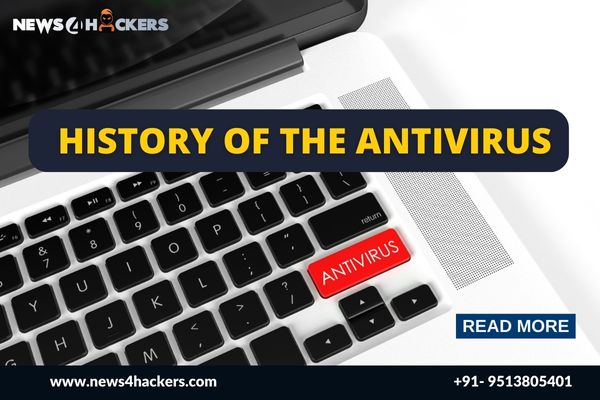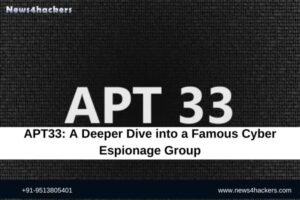History of the Antivirus

History of the Antivirus
The initial purpose of antivirus software was to identify and eliminate computer infections. Over the course of time, the internet underwent a process of evolution, leading to the emergence of a diverse range of technological advancements. Nevertheless, this surge in technological advancement did bring forth a negative consequence: the emergence of further, more sophisticated forms of malicious software or malware.
Consequently, the advent of contemporary antivirus software gave rise to a means of safeguarding users not just against computer viruses, but also against many forms of malicious software, including spyware, ransomware, adware, trojans, and ransom hijackers.
It is probable that you have installed some type of antivirus software on one or more of your devices. However, are you aware of the origins and development process of the software? This article aims to present a concise overview of the historical development of antivirus software.
The Idea of Antivirus:
The origins of antivirus software may be traced back to 1971, during which the initial instance of a computer virus, named Creeper, emerged and propagated among PDP-10 mainframe computers produced by Digital Equipment Corporation (DEC).
The development of the Reaper was undertaken by American computer programmer Ray Tomlinson as a means to counteract the Creeper. The program was specifically built with the purpose of eradicating the virus. It is important to acknowledge, however, that the Reaper did not function as a genuine antivirus program. However, it functioned like a virus, but with a more altruistic intention – to eradicate the Creeper from compromised computer systems.
The First True Antivirus Software
The years of the late 1980s were significant in establishing the fundamental principles of the antivirus software industry.
In the year 1987, Bernd Robert Fix, a renowned German computer security expert, developed a software program with the objective of eliminating the Vienna virus. This particular virus had the capability to infect .com files specifically on systems operating on the DOS platform. The precise origins of the initial antivirus software remain a subject of debate; however, this incident is the earliest recorded instance of a computer virus being successfully eliminated through the utilization of an authentic antivirus application.
During a concurrent period, G Data Software AG, a German company, introduced the initial antivirus software specifically developed for use on Atari ST computers. Subsequently, the business introduced the Ultimate Virus Killer (UVK) 2000. The establishment of McAfee, Inc., a prominent cybersecurity corporation, took place in 1987. Subsequently, the company introduced the initial iteration of VirusScan by the conclusion of that year. The inaugural iteration of NOD32 Antivirus was developed in 1987 by Peter Paško, Miroslav Trnka, and Rudolf Hrubý.
In conclusion in 1987, two other antiviral software were introduced, namely FlushShot Plus developed by Ross Greenberg, and Anti4us developed by Erwin Lanting. Although these tools are no longer extant, they are regarded as the initial heuristic antivirus software programs. In the realm of computer science, the term “heuristic” refers to the ability to efficiently solve problems and discover solutions in a more expedient manner compared to traditional or established methods.
The Rise of the Antivirus Software Industry
The expansion of the antivirus sector persisted throughout the year 1988 and extended into the subsequent decade of the 1990s. The establishment of Avira, a German cybersecurity firm, took place in 1986. However, it was not until a span of two years that the company introduced its initial iteration of AntiVir, which was referred to as Luke Filewalker at that time. Avast, a cybersecurity company based in the Czech Republic, was established and subsequently introduced the initial iteration of the Avast Antivirus software in the same year. Additionally, the establishment would develop a Virtual Private Network (VPN) known as Avast SecureLine VPN.
In 1988, Dr. Vesselin Bontchev, a computer science professional hailing from Bulgaria, developed and subsequently distributed a freely available antivirus software. During the autumn season, Alan Solomon founded S&S International, where he developed the commercially launched Dr. Solomon’s Anti-Virus Toolkit in 1991. This software was designed to compete with Symantec and McAfee, two prominent businesses in the industry.
During the 1990s, the industry experienced significant growth at an accelerated rate. Panda Security, an IT security specialist, was established in Spain in the year 1990. The formation of the Computer Antivirus Research Organization (CARO) coincided with the objective of conducting comprehensive research and analysis on malicious software. The group comprises notable individuals such as Alan Solomon, Vesselin Bontchev, and Eugene Kaspersky, who are affiliated with Kaspersky Lab.
In 1991, Symantec, a renowned company recognized for its Norton range of computer security solutions, introduced the inaugural iteration of Norton AntiVirus. AVG Technologies, a Dutch cybersecurity business, was established in the same year, with the release of its inaugural AVG AntiVirus software occurring the subsequent year. ESET, a Slovakia-based corporation, was founded in 1992 by the creators of the first NOD32 Antivirus software.
The emergence of many cybersecurity companies took place during the mid to late 1990s. Bitdefender, a cybersecurity company, was established in Romania in the year 1996. Similarly, Kaspersky Lab, another prominent cybersecurity firm, was created in 1997 by Eugene Kaspersky and Natalya Kaspersky, who was his spouse at that time. In the year 1998, it was observed that Kaspersky Anti-Virus was the sole software possessing the potential to effectively eradicate CIH, also known as Chernobyl or Spacefiller. This particular virus was initially disseminated in Taiwan by a student affiliated with Tatung University in the aforementioned country.
Antivirus Software in the New Millennium
The first decade of the 21st century witnessed significant progress and improvements in the field of antivirus technology. The anti-rootkit program called BlackLight was developed by F-Secure, a business based in Finland, in the year 2005. They were the inaugural cybersecurity company to do this.
In the year 2008, McAfee introduced Artemis, a cloud-based anti-malware feature that was incorporated into the version of McAfee VirusScan released that year. In 2011, AVG also developed a comparable solution known as Protective Cloud Technology.
Undoubtedly, the advancements spanning from the 1980s to the present have played a pivotal role in establishing cybersecurity as a formidable sector. The field of cybersecurity is a lucrative industry, generating billions of dollars in annual income. Furthermore, its expansion exhibits a sustained trajectory without indications of abating in the foreseeable future.
In 2016, Avast Software, the prevailing market leader with a market share of 19.11%, generated a total revenue of $714 million. ESET has the second position in terms of market share, accounting for 14.49% of the market. Its annual anticipated revenue is approximately $456 million. Avast has the third position in terms of market share, accounting for 9.57%. In the year 2015, the company had a total revenue of $1.75 billion.
Protect yourself with Hotspot Shield VPN.
In the realm of cybersecurity, it is important to acknowledge that no approach can guarantee absolute invulnerability. To optimize online security, it is advisable to combine a robust antivirus program with a virtual private network (VPN) like Hotspot Shield. Hence, you may download a good VPN antivirus software to enhance your VPN Cybersecurity.
In this context, you may also download or ask for a demo session of the ShieldXDR — the Best XDR Solution in India and many other reputed nations worldwide, which will ultimately help you upgrade your security posture with high-quality features in the international-standard XDR solution. Moreover, ShieldXDR is a unit of Craw Security, the Best VAPT Solutions Provider in India.
About The Author:
Yogesh Naager is a content marketer who specializes in the cybersecurity and B2B space. Besides writing for the News4Hackers blog, he’s also written for brands including CollegeDunia, Utsav Fashion, and NASSCOM. Naager entered the field of content in an unusual way. He began his career as an insurance sales executive, where he developed an interest in simplifying difficult concepts. He also combines this interest with a love of narrative, which makes him a good writer in the cybersecurity field. In the bottom line, he frequently writes for Craw Security.
Raed More News Here:









